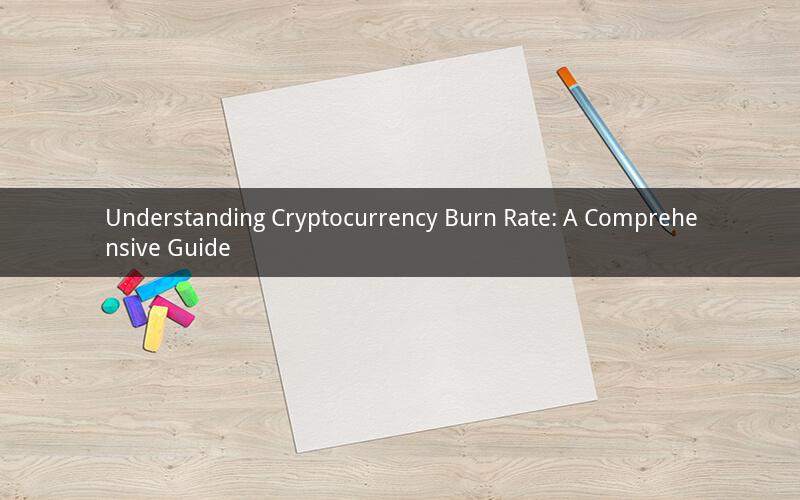
Introduction:
The concept of burn rate in cryptocurrency has gained significant attention in recent years. As the world becomes more digitized, cryptocurrencies have become a popular investment and trading asset. Understanding the burn rate can help investors make informed decisions and navigate the volatile crypto market effectively. In this article, we will explore what a burn rate is, its importance, and how it impacts the value of cryptocurrencies.
What is a Burn Rate in Crypto?
A burn rate in cryptocurrency refers to the process of permanently removing a certain amount of coins or tokens from circulation. This is typically achieved through a process called "burning," where coins are destroyed or rendered unusable. The main objective of burning tokens is to reduce the overall supply, which can lead to an increase in the value of the remaining tokens.
How Does a Burn Rate Work?
The process of burning tokens can vary depending on the specific cryptocurrency. However, the general idea is as follows:
1. The cryptocurrency project initiates a burn event by deciding on a certain number of coins or tokens to be burned.
2. The tokens are then transferred to a smart contract or a designated address where they cannot be retrieved or used.
3. The burned tokens are destroyed or rendered unusable, effectively reducing the total supply of the cryptocurrency.
4. As a result, the remaining tokens become more scarce, which can drive up their value in the market.
Importance of Burn Rate in Crypto
The burn rate plays a crucial role in the cryptocurrency market for several reasons:
1. Increased Value: By reducing the total supply of tokens, the burn rate creates scarcity, which can drive up the value of the remaining tokens. This is similar to the concept of scarcity in traditional markets, where rare items are often more valuable.
2. Confidence: Burn rate can enhance investor confidence in a cryptocurrency project. When a project actively works to reduce the supply of tokens, it shows a commitment to maintaining long-term value and addressing potential inflationary pressures.
3. Deflationary Tendencies: The burn rate contributes to deflationary tendencies in the cryptocurrency market. As the supply of tokens decreases over time, the value of the remaining tokens tends to increase, leading to a deflationary environment.
4. Market Manipulation: Burn rate can also be used as a tool to manipulate the market. By controlling the supply and demand of tokens, projects can influence the price and market sentiment surrounding their cryptocurrency.
Different Burn Rate Methods
Several methods can be employed to achieve a burn rate in cryptocurrency:
1. Automatic Burn: Some cryptocurrencies implement an automatic burn mechanism, where a predetermined percentage of tokens are burned periodically. This ensures a consistent reduction in supply over time.
2. Manual Burn: In other cases, the burn rate is determined by the cryptocurrency project's team or community. This method requires manual intervention to initiate the burning process.
3. Airdrop Burn: Projects may distribute tokens through airdrops to users who meet specific criteria, and a portion of these tokens can be burned to maintain scarcity.
4. Token Buybacks: Companies can buy back their own tokens from the market and burn them, reducing the supply and potentially increasing the value of the remaining tokens.
Impact of Burn Rate on Crypto Value
The burn rate can have a significant impact on the value of a cryptocurrency. Here are a few factors to consider:
1. Scarcity: As mentioned earlier, scarcity is a key driver of increased value. A higher burn rate can lead to increased scarcity, potentially boosting the value of the remaining tokens.
2. Market Sentiment: The burn rate can influence market sentiment, leading to increased demand and higher prices. However, market sentiment is also influenced by various other factors, such as regulatory news, technological advancements, and overall market trends.
3. Supply and Demand: The burn rate contributes to the supply and demand dynamics in the cryptocurrency market. As the supply decreases and demand remains stable or increases, the value of the cryptocurrency may rise.
Frequently Asked Questions (FAQs)
1. What is the purpose of burning tokens in cryptocurrency?
The main purpose of burning tokens is to reduce the overall supply, which can lead to increased value and scarcity of the remaining tokens.
2. Can burning tokens lead to an increase in the price of a cryptocurrency?
Yes, by reducing the supply of tokens, the burn rate can create scarcity, which can drive up the value of the remaining tokens.
3. How does a burn rate differ from a supply cap in cryptocurrency?
A burn rate is a method of reducing the supply of tokens over time, while a supply cap is a maximum limit on the total number of tokens that can ever exist.
4. Can burning tokens be reversed?
No, once tokens are burned, they are permanently removed from circulation and cannot be reversed.
5. Is a high burn rate always beneficial for a cryptocurrency?
While a high burn rate can increase scarcity and potentially drive up value, it is not always beneficial. The burn rate should be balanced with other factors, such as demand and market sentiment.
Conclusion:
Understanding the burn rate in cryptocurrency is essential for investors and traders looking to navigate the volatile market effectively. By reducing the supply of tokens, the burn rate can create scarcity and potentially increase the value of the remaining tokens. However, it is crucial to consider other factors, such as market sentiment and supply and demand dynamics, when evaluating the impact of the burn rate on a cryptocurrency's value.